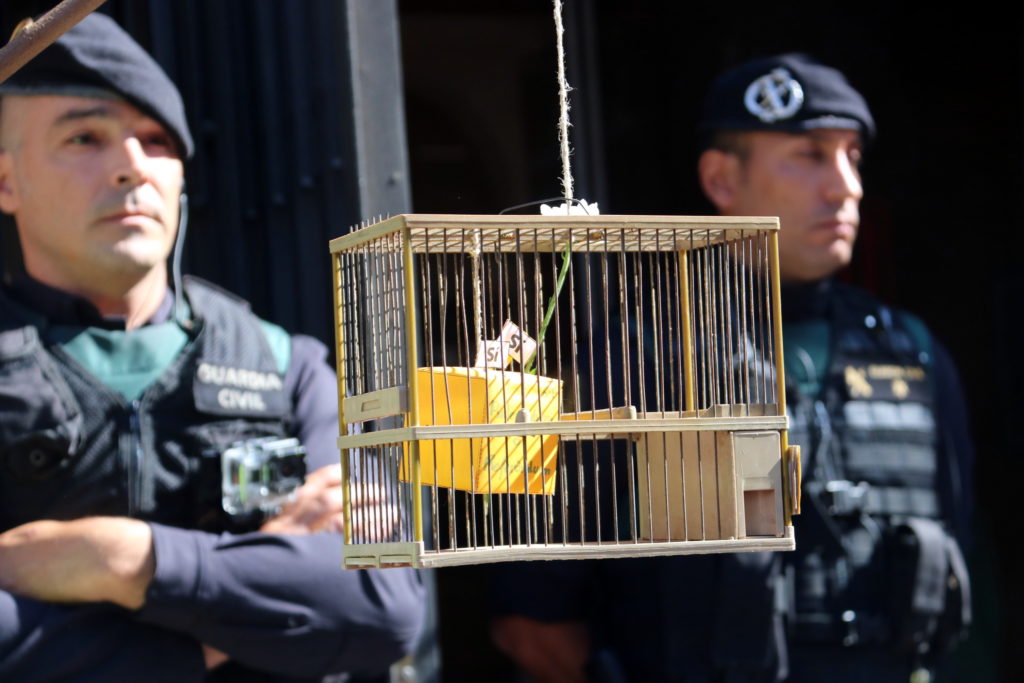14.10.2019 - 07:45
|
Actualització: 14.10.2019 - 09:45
“Referendum or referendum.” This phrase by exiled Catalan president, Carles Puigdemont, on September 28, 2016 – aimed at persuading the independence camp to keep him in power – was probably the beginning of the 2017 push for independence, which led to the unilateral vote and all of its consequences. However, it all goes back several years before that, to 2010, when Spain’s Constitutional Courtruled as partially illegal the law meant to enhance Catalonia’s self-rule, the Statute of Autonomy – something which led to a dramatic rise in calls for independence, an unofficial vote in 2014 that was ruled illegal, and the promise of a joint pro-independence candidacy in 2015 to deliver a Catalan Republic in 18 months.
Yet, it could well have been Puigdemont’s September 2016 speech that was the tipping point, as the then-president pledged to hold a government-organized referendum on independence within a year, whether negotiated with Spain or not. After a year of tension and failed talks with Spain, the Catalan government officially called the referendum for October 1, 2017, four months beforehand, with ministers pledging that the vote would be “like the others.”
But it was not. Throughout the year, the government and parliament bureau members – led by speaker Carme Forcadell – were contacted on several occasions by the Spanish judiciary warning of “criminal charges” if they went forward with a referendum without Madrid’s consent. Some of these warnings were at the request of the Spanish government at the time, which said the country’s legal framework did not allow for such a vote.
Voting logistics
In order to counter that argument, the Catalan parliament passed several laws in early September 2017 on the referendum and a transition period towards a Catalan Republic if the ‘yes’ vote won, including a declaration of independence. In the meantime, the logistics of the vote were discreetly executed, including setting up an electoral register, polling stations, and ordering thousands of ballot boxes and millions of ballot papers.
Both the early September plenary sessions in Parliament and raids by Spanish police around the country – looking to dismantle the logistics in newsrooms, printing firms, and warehouses, among other places – contributed to a rise in tensions between institutions, but also on the streets.
Demonstrations occurred almost every day, peaking on September 20, when Spain’s judiciary and police launched raids of some 40 Catalan government buildings, arresting 15 officials. A massive rally was held all day outside Catalonia’s economy department, resulting in no injuries but two police cars damaged.
Referendum takes place
However, the raids did not prevent the vote from taking place on October 1, despite up to 6,000 police officers being sent to Catalonia from across Spain.
Over two million people voted in the referendum, despite a Spanish police crackdown at dozens of polling stations around the country, which left over 1,000 injured, according to the Catalan health department.
A spontaneous general strike on October 3 followed, as well as a rare televised message from the King of Spain warning the independence movement.
Spain responds with repression
A few days later, the leaders of the two pro-independence organizations leading the September 20 rallies were held in preventive custody accused of sedition.
During October, discreet talks between the Catalan and Spanish governments took place through mediators, as in public the former Catalan president said they were ready to declare independence if Madrid did not sit at the negotiating table. Meanwhile, Spain’s executive paved the way to suspend Catalonia’s self-rule.
In the end, both events happened on the very same day: October 27. Catalonia’s parliament declared independence in the afternoon, and Madrid took control of the country that evening, sacking the government and calling an election for December 21.
The following Monday, Spain’s state prosecutor charged 20 government officials with rebellion, while part of the sacked government went into exile in Brussels.
On November 2, the seven government members who had stayed were held in custody, while some were sent home afterwards and then jailed again. Two of them – plus two activist leaders – have now been in pre-trial prison for almost two years.
Since then, some of the jailed and exiled leaders have taken part in several elections while under investigation by the judiciary. Finally, their trial was held from February 12 to June 12, 2019.
Twelve leaders were in the dock – while others remained in exile after two failed attempts by Spain to extradite them – for four months, in a process that included over 400 witnesses.
The Supreme Court’s verdict on them is now imminent and will rule whether Puigdemont’s “referendum or referendum” first announced in September 2016 is a crime carrying years in jail under Spanish law.


